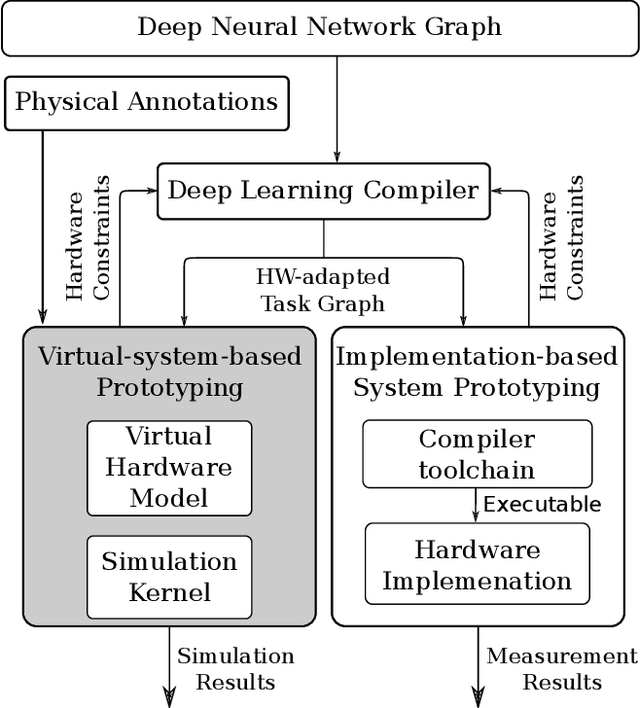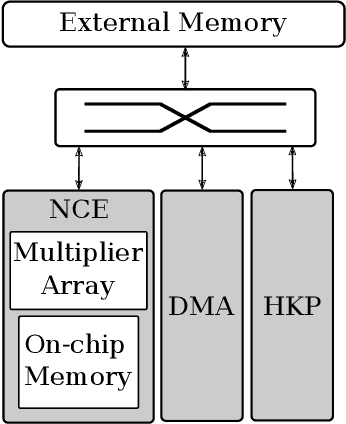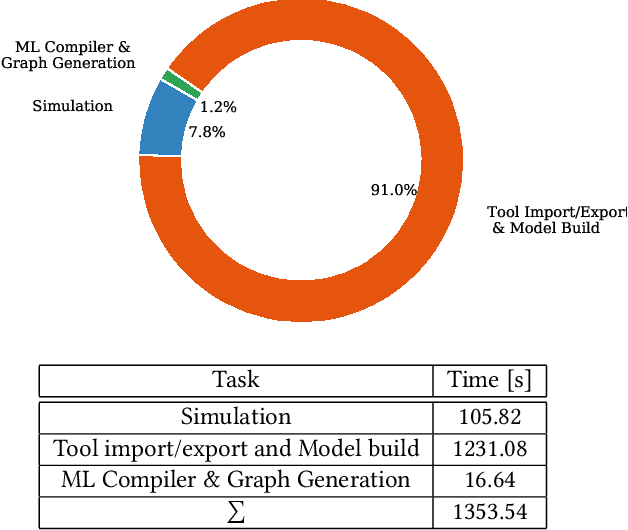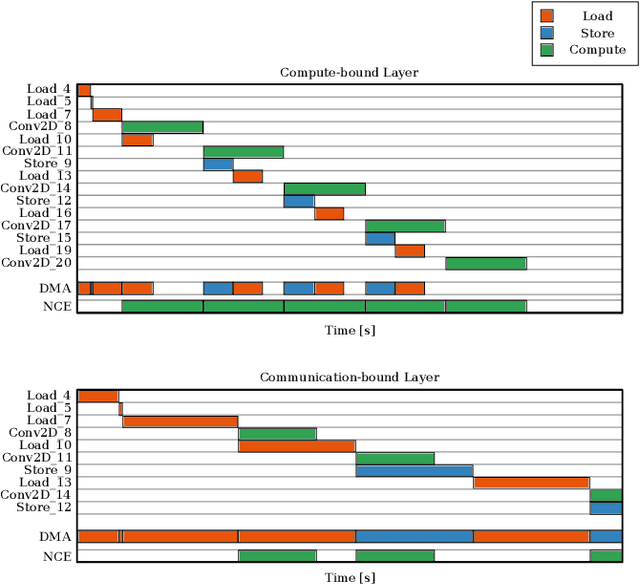Michael J. Klaiber
Enabling Cross-Domain Communication: How to Bridge the Gap between AI and HW Engineers
Apr 08, 2021
Abstract:A key issue in system design is the lack of communication between hardware, software and domain expert. Recent research work shows progress in automatic HW/SW co-design flows of neural accelerators that seems to make this kind of communication obsolete. Most real-world systems, however, are a composition of multiple processing units, communication networks and memories. A HW/SW co-design process of (reconfigurable) neural accelerators, therefore, is an important sub-problem towards a common co-design methodology. The ultimate challenge is to define the constraints for the design space exploration on system level - a task which requires deep knowledge and understanding of hardware architectures, mapping of workloads onto hardware and the application domain, e.g. artificial intelligence. For most projects, these skills are distributed among several people or even different teams which is one of the major reasons why there is no established end-to-end development methodology for digital systems. This position paper discusses possibilities how to establish such a methodology for systems that include (reconfigurable) dedicated accelerators and outlines the central role that languages and tools play in the process.
An End-to-End HW/SW Co-Design Methodology to Design Efficient Deep Neural Network Systems using Virtual Models
Nov 18, 2019



Abstract:End-to-end performance estimation and measurement of deep neural network (DNN) systems become more important with increasing complexity of DNN systems consisting of hardware and software components. The methodology proposed in this paper aims at a reduced turn-around time for evaluating different design choices of hardware and software components of DNN systems. This reduction is achieved by moving the performance estimation from the implementation phase to the concept phase by employing virtual hardware models instead of gathering measurement results from physical prototypes. Deep learning compilers introduce hardware-specific transformations and are, therefore, considered a part of the design flow of virtual system models to extract end-to-end performance estimations. To validate the run-time accuracy of the proposed methodology, a system processing the DilatedVGG DNN is realized both as virtual system model and as hardware implementation. The results show that up to 92 % accuracy can be reached in predicting the processing time of the DNN inference.
 Add to Chrome
Add to Chrome Add to Firefox
Add to Firefox Add to Edge
Add to Edge